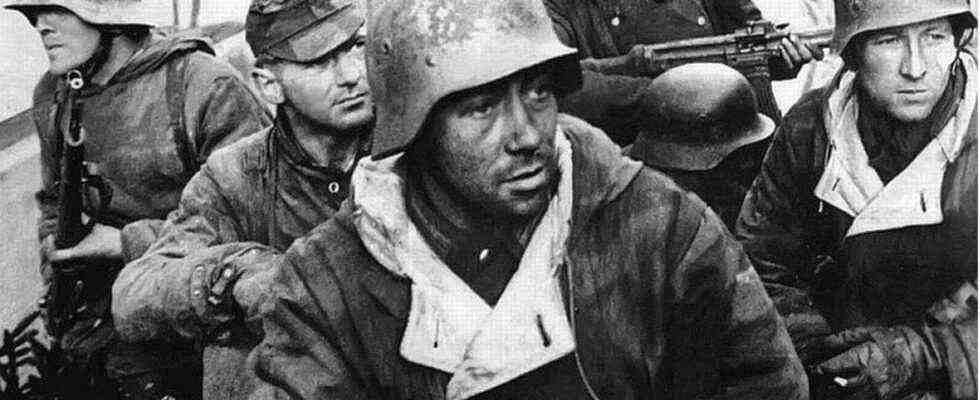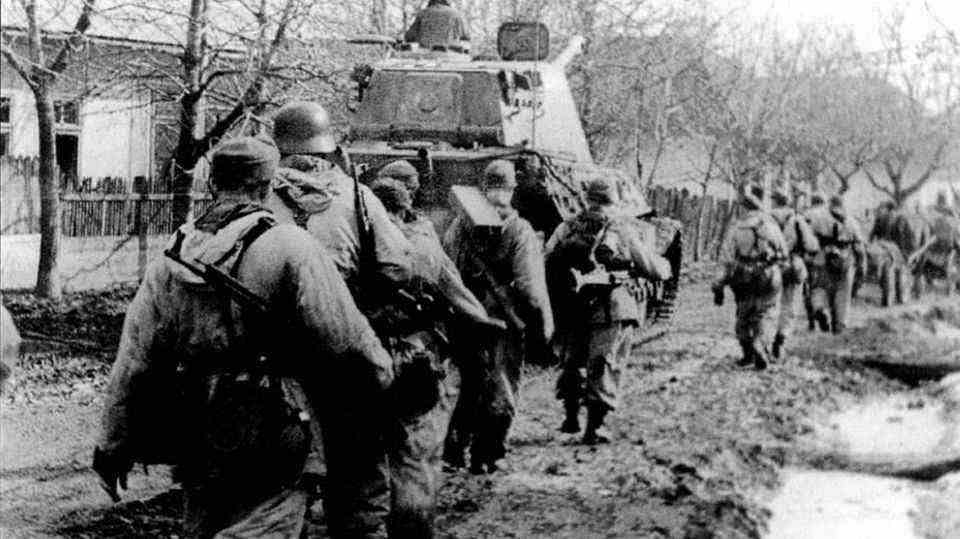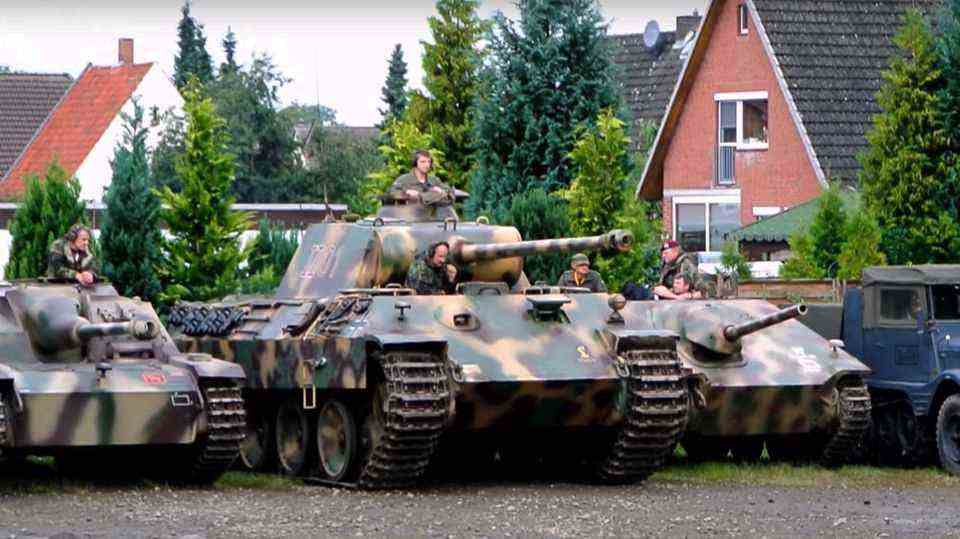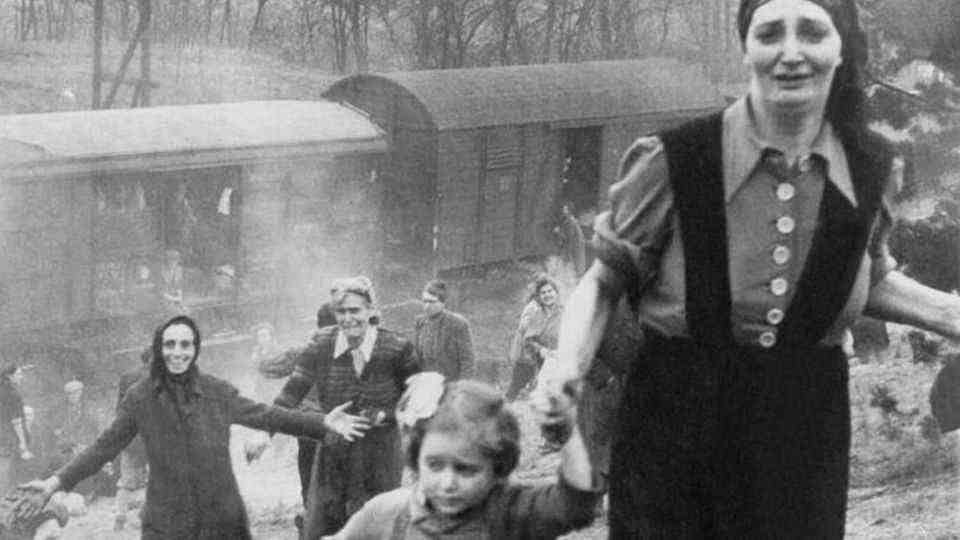Second World War
Spring awakening – in a crazy offensive Hitler burned his last SS divisions
Formally, the associations were almost at their target strength.
© Commons
In March 1945, the Germans launched a final offensive, carried out by the Waffen-SS. She got stuck in mud and anti-aircraft fire. Hitler’s best forces did not deploy near Berlin, but far to the south.
In the spring of 1945, the situation for Germany on the Eastern Front was almost catastrophic. The Red Army was only 70 kilometers from Berlin. The defensive positions on the Seelower Höhen were the only obstacle in front of the German capital. On March 6, 1945, the last major offensive of the Third Reich started. In the collapsing structures of the Wehrmacht and war economy, the Germans managed to once again assemble a large armed force. 430,000 soldiers, about 800 tanks and self-propelled guns, 6,000 heavy artillery pieces and mortars took part in Operation Spring Awakening. Even 800 planes had been scraped together.
The 6th SS Panzer Army under Generaloberst Josef “Sepp” Dietrich was the battering ram designed to break through the Allied lines. But the offensive was not intended to throw back the Russians in front of Berlin or to prevent US troops from entering Reich territory. The last German offensive started in Hungary. There the Red Army was to be thrown back across the Danube. The aim of Operation “Spring Awakening” was to encircle and destroy all enemy forces on the Danube, Drava and Lake Balaton. So the last major oil fields in western Hungary and Austria should be secured.
Impressive strength on paper
The 6th SS Panzer Army consisted of two corps with a total of four SS Panzer Divisions: the 1st (Leibstandarte Adolf Hitler), 2nd (Das Reich), 9th (Hohenstaufen) and 12th (Hitler Youth). After the Ardennes offensive, the associations had been replenished. But the personnel differed from the fanatical volunteers with whom the divisions had been formed. The replacements for the former elite divisions consisted of conscripts, the remnants of shot-up formations, and large numbers of Luftwaffe ground personnel.
Only the 3rd Ukrainian Front with about 400,000 men faced the direct attack, after the hard fighting around Budapest tanks were scarce. But the Russian high command had several large formations in the area as reserves. The company’s success beyond a temporary slump was therefore unlikely from the outset.
Plans of attack were known
Added to this was the fact that Moscow, despite strict secrecy, had seen through the German plans. Fourteen days before the start of the German strike, three deep defensive lines were set up. At the beginning of March 6, the Germans achieved at least local successes. The main forces were concentrated between Lake Velence and Lake Balaton. They were favored by bad weather: fog and snow. The German tanks appeared out of nowhere just a few hundred yards from the Soviet positions.
“At Lake Balaton our regiment suffered colossal losses,” wrote Lieutenant Eduard Melikov of the 877th Artillery Regiment. “Two hundred German tanks rolled towards our division at once, our howitzers fired from all barrels … The fighting was cruel. In the whole war the regiment did not lose as many men as in Hungary.”
But the Red Army was a master of defense and mastered the art of setting up covered defenses for anti-tank weapons. In the endangered zones there were 65 guns and grenade launchers per kilometer of front width, plus 28 anti-tank guns. In addition, mines were deployed. Then there was the weather. Deep mud hampered German movements. Much of the heavy equipment could not be brought into the battle line at all. The German leadership ignored warnings that the area around the Sárvíz – the mud lake – area was not suitable for armored formations in the spring.
Paralyzing Mud
The Germans offer their best equipment for the offensive: Panther, Tiger and Königstiger tanks. In addition, the dangerous “Jagdpanther”, the heavy “Jagdtiger”. For the first time, the Germans used tanks with night vision devices. The casualty and salvage reports show that very few tanks actually fought. Most were stranded because of the mud and artillery fire.
When the Red Army retaliated, entire columns of abandoned German combat vehicles fell into the hands of the Red Army. As early as the evening of March 6, the commander of Army Group South, General Otto Weller, reported: “Due to the heavy mud, the tanks can hardly move in the country, and all roads are blocked by minefields and enemy artillery. The infantry units could not achieve a quick breakthrough , and the fierce fighting consumed large quantities of ammunition, leaving the soldiers in short supply. The enemy clearly anticipated our offensive and had prepared for it, although they did not know exactly when and where the main attacks would take place.”
After several days of heavy fighting, the Germans had broken through two of the defensive lines. But this “success” meant little. The Soviet high command sacrificed the troops in the first line and waited until the German forces were exhausted before using the reserves.
Dissolution of the associations
The Germans, on the other hand, still had enough troops for a first strike, but they now lacked fresh units to continue the fighting. The strength was not enough to continue the offensive. The Germans got 30 kilometers, then it was over. Heinz Guderian wrote in his memoirs: “The hitherto high morale of the SS divisions was now lost. Under the cover of the stubbornly resistant tank crews, whole formations withdrew against orders. One could no longer rely on these divisions.”
Hitler threw an outburst. He got into a terrible rage and ordered the soldiers to tear the bands with the regiment names off their sleeves. Guderian, on the other hand, knew the troop casualty figures and knew that the crazy last offensive had not failed because the soldiers were not ready for action.
He also knew that the SS people had removed the tapes with names like “Reichsfuhrer SS” themselves, so that they would not be shot immediately if they were captured.
On March 16, the Soviet counter-offensive began. The Stavka released the reserve army of the 3rd Ukrainian Front, and another Guards Tank Army was assigned to it. The “Vienna Offensive” began. In just one month the capital of Austria was taken.







